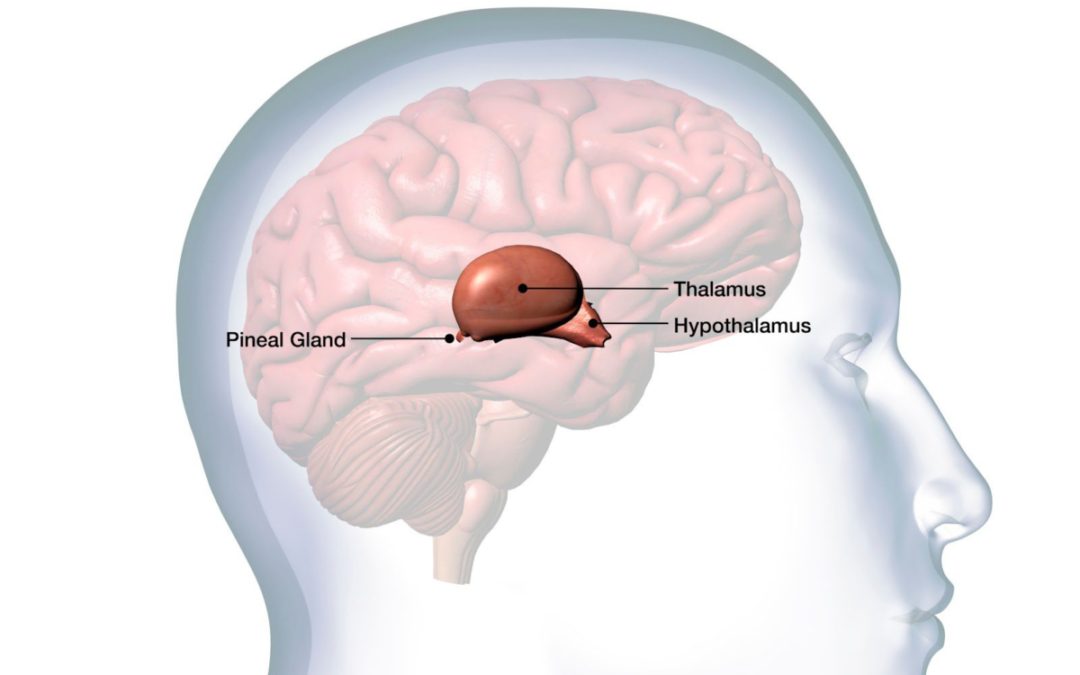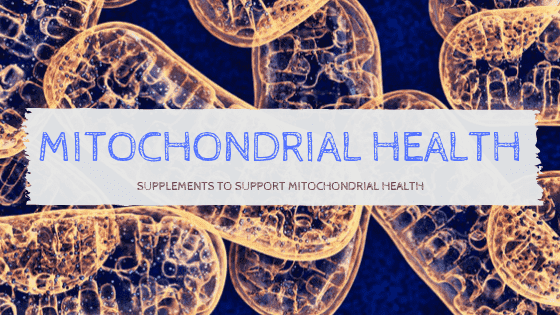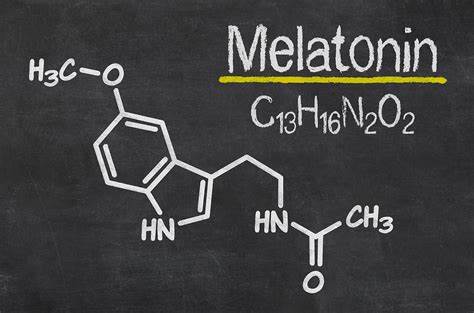The mysterious pineal gland is a small organ in the brain located near to the center of the brain, just below the two hemispheres, and behind the ocular cavity. It is easily visible as a tiny pine cone-shaped structure.
Mysterious Pineal Gland – Let’s Learn About It!
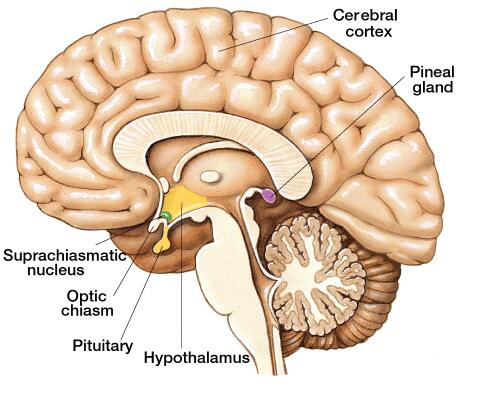
The pineal gland is part of the endocrine system that produces melatonin. The gland can sense light and play a role in circadian rhythms. Another function ensures that we wake up at appropriate times each day, despite changes in light levels outside. This discovery was believed to be its only function by medical science for years but that’s not the end of the story.
The pineal is also capable of remote viewing other places. It can do this by receiving electromagnetic signals from other places and the content of dreams.
The Pineal Gland Remote Viewing Capabilities?
This theory was first discovered by Doctor Rick Strassman, a medical doctor and psychedelics researcher who experimented with DMT on volunteers in 1990s.
There are two types of remote viewing: clairvoyance and clairaudience. Clairvoyance is the ability to see events or objects that are far away from you; while clairaudience is the ability to hear distant sounds. Many people believe that the pineal gland can do both of these things.
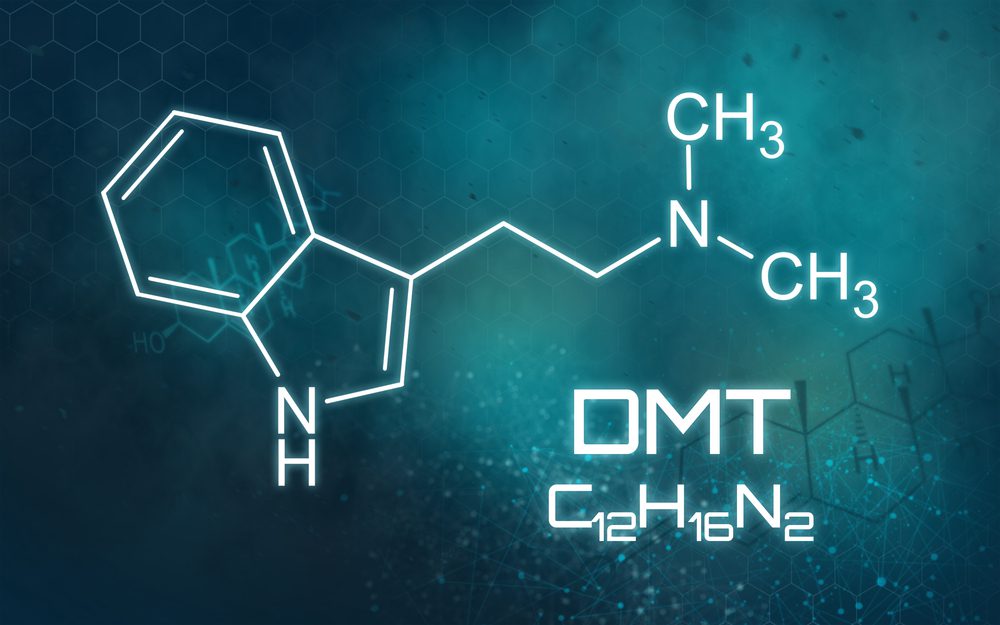
Remote viewing is the act of gathering information about a remote geographical location using extrasensory perception. The term was coined in 1974 by American parapsychologist J. B. Rhine to denote psychic perception occurring at a distance, including clairvoyance, precognition, and telepathy.
Remote Viewing, (RV), is the process of acquiring information about places, people or objects without being physically present there. Remote Viewing can be done with both distance viewing and live-time viewing. Distance Viewing is when the person performing the RV goes into a deep trance state where they are able to see images or feel sensations concerning their target location. Live-time Viewing is when the person performing the RV stays awake but uses their clairvoyance abilities to see what’s in the other location.
There are many theories about what this little gland can do based on its location in the brain. Some people believe it can produce hormones, regulate sleep patterns, control metabolism, affect sexual health and more.
There are many different pollutants and chemicals that can make this gland inoperable if it becomes calcified.
The pineal gland is a pea-sized gland found in the middle of the brain. Pineal health is important as it can regulate our circadian rhythm and keep us from being overstimulated. There are many supplements that help with pineal gland health as it regulates energy levels and moods. A few of these substances include DMT, L-Arginine, and L-Tryptophan.
While the pineal gland plays a vital role in our everyday life, its function has been largely unexplored. With all the research that is being conducted on the human body, it’s not surprising that people are eager to learn about how to develop their pineal gland for various reasons.
A Few Supplements that Clean and Boost the Pineal
The pineal gland also produces serotonin, dopamine, norepinephrine, and epinephrine.
While most people consider DMT, L-arginine and Tryptophan as the go-to substances when it comes to boosting pineal gland remote viewing function, there are other supplements or nootropics with little to no side effects.
One of these supplements is Mucuna Pruriens, a natural plant extract that helps people with Parkinson’s disease. This supplement can help get rid of Parkinson’s symptoms such as tremors and spasms. It also helps people with high blood pressure to relax by increasing the levels of dopamine in the brain.
Mucuna Pruriens has been used for treating other diseases such as: dystonia, restless leg syndrome, and premenstrual dysphoric disorder (PMDD). As it is a natural plant extract, this supplement does not have any side effects or risks when taken in moderation.
Some studies have shown that this small gland may play a role in depression, bipolar disorder, seasonal affective disorder, cancer progression as well as schizophrenia.
Nootropics decalcify and strengthen the pineal gland by reducing calcification through an increase in uptake of calcium ions.
Noopept and Phenylpiracetam are other nootropics that can activate the pineal gland.
Noopept is a Russian nootropic drug that is often used to treat cognitive disorders such as Alzheimer’s. Phenylpiracetam is a stimulant drug used in Europe to treat cerebrovascular diseases and memory disorders such as age-related dementia or Alzheimer’s.
Caveat: Fluoridated tap water is known to calcify the pineal so it is mandatory to drink purified water to have any chance of activating it! Read this horror story article on 33 states having toxic city water.
It is not believed possible to enjoy better overall health and wellness by activating the pineal gland in general western medicine however this sentiment is not shared universally.
This author believes that the pineal gland along with our appendix and other questionable organs such as the tonsils, gall bladder, etc., have had a purpose and function at least at some time in our evolution.
My Remote Viewing Experience
As a child, I experienced live remote viewing episodes around the ages of 8 to 10 years old. I still vividly recall sitting in class during the 4th grade when we were quietly reading to ourselves and floating to the ceiling to view the entire class along with myself seated at my desk! This happened a few times and I really enjoyed the experience and assumed other kids probably had the same ability so I never spoke about it until many years later. I found it very rare that anyone shared this phenomenon but did speak to a few people over the years that did have this experience.
I believe it is the nature of the uncluttered child mind plus the purity and unpolluted brain of a 10 year old that has quite a bit to do with this experience. As we age and become bombarded with many problems. chemicals and pollutants, I believe our pineal gland becomes calcified and inactive for the most part. It may very well do the basics like regulate melatonin but the esoteric and incredible nature of its ultimate purpose is for the most part gone in the majority of people. Even our sleep cycles are getting worse with the increase of chemicals, pesticides and pharmaceuticals dumped in our water.
Conspiracy theories abound that the globalist powers that be do not want the mass population to have developed pineal glands and think independently. The 5G, blue light, radiation, geo engineered food and polluted water is believed designed in part to dumb down and control the population similar to prisons putting fluoride in the water of inmates to calm them.
There is research that points to several more dimensions existing that we were not designed to experience but we may have the ability to sense more than just three if our pineal glands are functioning properly.
It was mentioned that DMT is an adjunct or ignitor of the pineal but this is only speculation. It has been proven that we produce small amounts of DMT in our brain and possibly the pineal gland. Some people believe that taking DMT by smoking or drinking the tea is just a psychedelic trip like LSD and other hallucinogens. Others believe it to be much more and a door to other dimensions for a brief period of time.

I have not taken DMT but have spoken to several people that have and listened to videos of high level thinkers and doctors discuss their experiences. The common thread I have heard are viewing little demonic like creatures that have the exact same description from several people that are entirely unrelated. Many DMT travelers have said they learned a great deal about themselves and the universe and it changed their outlook on life itself.
I tend to think that since this substance is in our brain naturally and tied to the pineal gland, there has to be much more to this gland’s function than sleep cycles.
I find it quite fascinating that most people I have spoken to over time do not know about the pineal gland nor its function or even existence. It certainly has not been studied much nor subject of discussion in school.
Related reading – powerful frequency effects from music

Excerpts from the NIH research on the pineal gland
Pineal gland is a unique organ which is localized in the geometric center of the human brain. Its size is individually variable and the average weight of pineal gland in human is around 150 mg [1], the size of a soybean. Pineal glands are present in all vertebrates [2]. Pineal-like organs are also found in non-vertebrate organisms such as insects [3,4,5]. It appears that the sizes of pineal glands in vertebrates are somehow associated with survival in their particular environments and their geographical locations.
The harsher (colder) their habitant, the larger their pineal glands are. A general rule is that the pineal gland increases in size in vertebrates from south to north or from the equator to the poles [6]. It is unknown whether if the same species moved to a different environment this would cause a change in the size of their pineal gland.
It was reported that several physiological or pathological conditions indeed alter the morphology of the pineal glands. For example, the pineal gland of obese individuals is usually significantly smaller than that in a lean subject [7]. The pineal volume is also significantly reduced in patients with primary insomnia compared to healthy controls and further studies are needed to clarify whether low pineal volume is the basis or a consequence of a functional sleep disorder [8].
These observations indicate that the phenotype of the pineal gland may be changeable by health status or by environmental factors, even in humans. The largest pineal gland was recorded in newborn South Pole seals; it occupies one third of their entire brain [9,10]. The pineal size decreases as they grow. Even in the adult seal, however, the pineal gland is considerably large and its weight can reach up to approximately 4000 mg, 27 times larger than that of a human. This huge pineal gland is attributed to the harsh survival environments these animals experience [11].
The human pineal gland has been recognized for more than 2000 years. The father of anatomy, the Greek anatomist, Herophilus (325–280 BC), described the pineal gland as a valve of animal memory. René Descartes (1596–1650), a French philosopher, mathematician, and scientist, regarded the pineal gland as the principal seat of the soul and the place in which all thoughts are formed.
A real biological function of pineal gland was not uncovered until 1958 [12], that is, this gland is a secretory organ which mainly produces and releases a chemical, called melatonin, into the blood circulation and into the cerebrospinal fluid (CSF). In addition, it also produces some peptides [13,14] and other methylated molecules, for example, N,N-dimethyltryptamine (DMT or N,N-DMT) [15,16], a potent psychedelic.
This chemical was suggested to be exclusively generated by the pineal gland at birth, during dreaming, and/or near death to produce “out of body” experiences [17]. However, the exact biological consequences (if any) of these substances remain to be clarified. Recently, it was reported that pineal gland is an important organ to synthesize neurosteroids from cholesterol. These neurosteroids include testosterone (T),
5α- and 5β-dihydrotestosterone (5α- and 5β-DHT), 7α-hydroxypregnenolone (7α-OH PREG) and estradiol-17β (E2). The machinery for synthesis of these steroids has been identified in the gland. 7α-OH PREG is the major neurosteroid synthesized by the pineal gland. Its synthesis and release from gland exhibits a circadian rhythm and it is regulates the locomote activities of some vertebrates, especially in birds [18]. These observations opened a new avenue for functional research on pineal gland; the observations require further confirmation.
It would appear to me that we should be researching the heck out of this gland as it could open doors to so many unanswered questions about our physiology, neurology, hormones and sexual health!
This author draws the conclusion that with age and the onset of poor sleep cycles, diminished hormones and mental acuity, the pineal gland could be a huge factor in all of these functions. It would appear that detoxifying, intermittent fasting and anti-oxidant supplements may play an important part in pineal gland health and overall wellness. For the time being, we should clean up our acts with pure water, food and air as much as possible and continue to research this tiny gland in our brain.
References
1. Golan J., Torres K., Staśkiewicz G.J., Opielak G., Maciejewski R. Morphometric parameters of the human pineal gland in relation to age, body weight and height. Folia Morphol. 2002;61:111–113. [PubMed] [Google Scholar]
2. Tan D.X., Manchester L.C., Fuentes-Broto L., Paredes S.D., Reiter R.J. Significance and application of melatonin in the regulation of brown adipose tissue metabolism: Relation to human obesity. Obes. Rev. 2011;12:167–188. doi: 10.1111/j.1467-789X.2010.00756.x. [PubMed] [CrossRef] [Google Scholar]
3. Hintermann E., Jenö P., Meyer U.A. Isolation and characterization of an arylalkylamine N-acetyltransferase from Drosophila melanogaster. FEBS Lett. 1995;375:148–150. doi: 10.1016/0014-5793(95)01198-N. [PubMed] [CrossRef] [Google Scholar]
4. Itoh M.T., Hattori A., Sumi Y., Suzuki T. Day-night changes in melatonin levels in different organs of the cricket (Gryllus bimaculatus) J. Pineal Res. 1995;18:165–169. doi: 10.1111/j.1600-079X.1995.tb00156.x. [PubMed] [CrossRef] [Google Scholar]
5. Vivien-Roels B., Pevet P., Beck O., Fevre-Montange M. Identification of melatonin in the compound eyes of an insect, the locust (Locusta migratoria), by radioimmunoassay and gas chromatography-mass spectrometry. Neurosci. Lett. 1984;49:153–157. doi: 10.1016/0304-3940(84)90152-6. [PubMed] [CrossRef] [Google Scholar]
6. Ralph C.L. The pineal gland and geographical distribution of animals. Int. J. Biometeorol. 1975;19:289–303. doi: 10.1007/BF01451040. [PubMed] [CrossRef] [Google Scholar]
7. Grosshans M., Vollmert C., Vollstaedt-Klein S., Nolte I., Schwarz E., Wagner X., Leweke M., Mutschler J., Kiefer F., Bumb J.M. The association of pineal gland volume and body mass in obese and normal weight individuals: A pilot study. Psychiatr. Danub. 2016;28:220–224. [PubMed] [Google Scholar]
8. Bumb J.M., Schilling C., Enning F., Haddad L., Paul F., Lederbogen F., Deuschle M., Schredl M., Nolte I. Pineal gland volume in primary insomnia and healthy controls: A magnetic resonance imaging study. J. Sleep Res. 2014;23:276–282. doi: 10.1111/jsr.12125. [PubMed] [CrossRef] [Google Scholar]
9. Bryden M.M., Griffiths D.J., Kennaway D.J., Ledingham J. The pineal gland is very large and active in newborn antarctic seals. Experientia. 1986;42:564–566. doi: 10.1007/BF01946705. [PubMed] [CrossRef] [Google Scholar]
10. Cuello A.C., Tramezzani J.H. The epiphysis cerebri of the Weddell seal: Its remarkable size and glandular pattern. Gen. Comp. Endocrinol. 1969;12:154–164. doi: 10.1016/0016-6480(69)90148-8. [PubMed] [CrossRef] [Google Scholar]
11. Tan D.X., Manchester L.C., Sainz R.M., Mayo J.C., León J., Reiter R.J. Physiological ischemia/reperfusion phenomena and their relation to endogenous melatonin production: A hypothesis. Endocrine. 2005;27:149–158. doi: 10.1385/ENDO:27:2:149. [PubMed] [CrossRef] [Google Scholar]
12. Lerner A.B., Case J.D., Takahashi Y., Lee T.H., Mori W. Isolation of melatonin, the pineal gland factor that lightens melanocytes. J. Am. Chem. Soc. 1958;80:2587. doi: 10.1021/ja01543a060. [CrossRef] [Google Scholar]
13. Pavel S., Petrescu S. Inhibition of gonadotrophin by a highly purified pineal peptide and by synthetic arginine vasotocin. Nature. 1966;212:1054. doi: 10.1038/2121054a0. [PubMed] [CrossRef] [Google Scholar]
14. Khavinson V.K., Kopylov A.T., Vaskovsky B.V., Ryzhak G.A., Lin’kova N.S. Identification of Peptide AEDG in the Polypeptide Complex of the Pineal Gland. Bull. Exp. Biol. Med. 2017;164:41–43. doi: 10.1007/s10517-017-3922-8. [PubMed] [CrossRef] [Google Scholar]
15. Hill D.R., Persinger M.A. Application of transcerebral, weak (1 microT) complex magnetic fields and mystical experiences: Are they generated by field-induced dimethyltryptamine release from the pineal organ? Percept. Mot. Skills. 2003;97:1049–1050. doi: 10.2466/pms.2003.97.3f.1049. [PubMed] [CrossRef] [Google Scholar]
16. Guchhait R.B. Biogenesis of 5-methoxy-N,N-dimethyltryptamine in human pineal gland. J. Neurochem. 1976;26:187–190. [PubMed] [Google Scholar]
17. Nichols D.E. N,N-dimethyltryptamine and the pineal gland: Separating fact from myth. J. Psychopharmacol. 2017;32:30–36. doi: 10.1177/0269881117736919. [PubMed] [CrossRef] [Google Scholar]
18. Tsutsui K., Haraguchi S., Vaudry H. 7α-Hydroxypregnenolone regulating locomotor behavior identified in the brain and pineal gland across vertebrates. Gen. Comp. Endocrinol. 2017 doi: 10.1016/j.ygcen.2017.09.014. [PubMed] [CrossRef] [Google Scholar]

